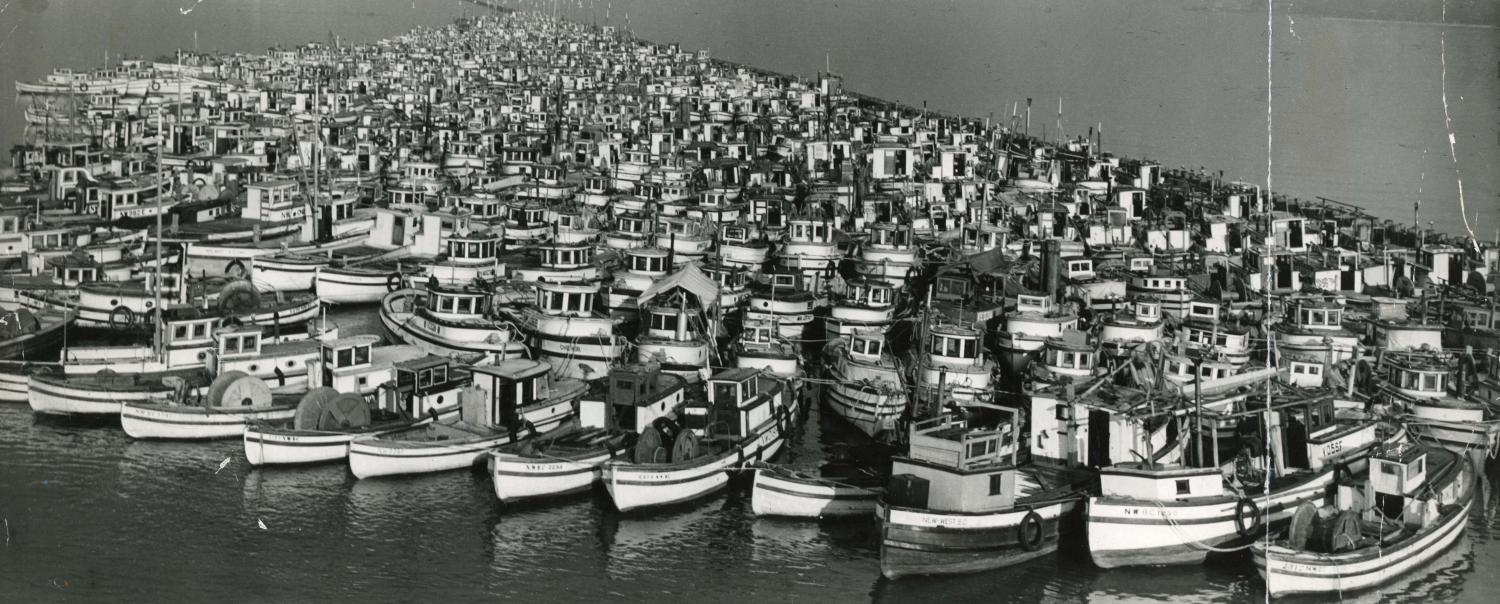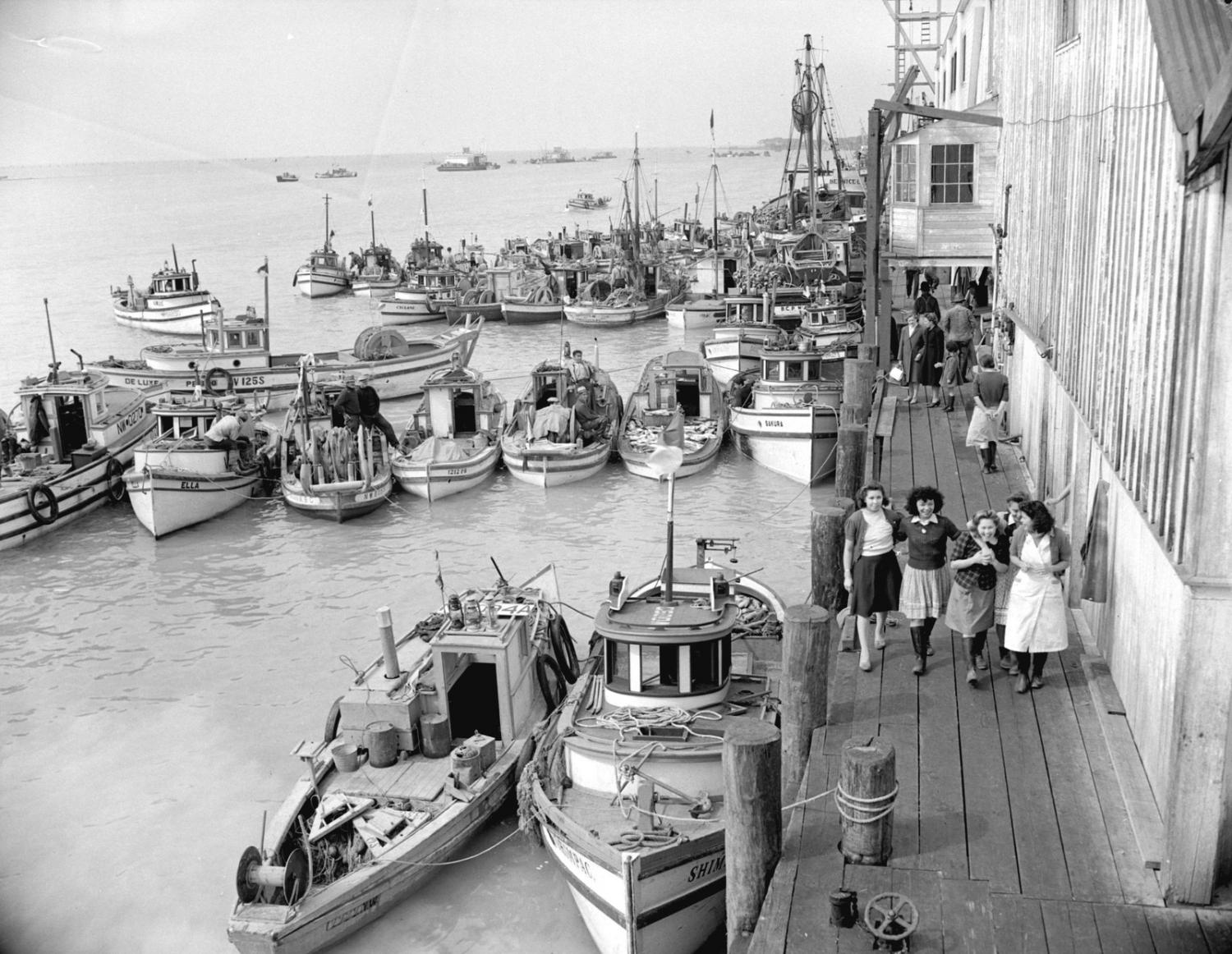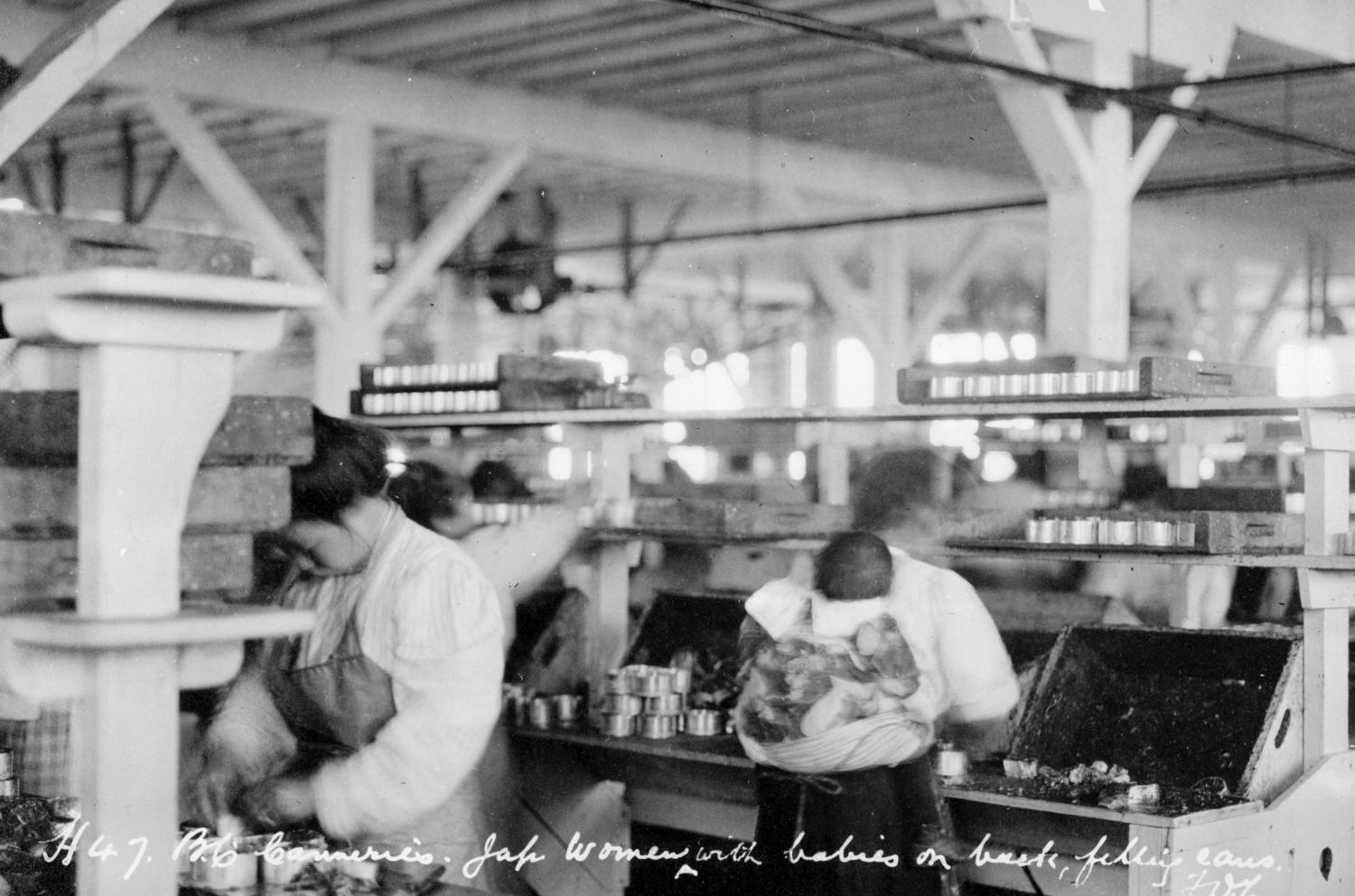Steveston's Japanese Flourish
Town on the Fraser River was once home to Canada’s second-largest Japanese settlement
Date: 1900
The story of British Columbia’s Japanese-Canadian community cannot be told without talking about fish. Barred from numerous professions, many of Canada’s first Japanese immigrants –– known as the Issei or the “first generation” –– worked as fishermen after landing on B.C.’s shores in the final decades of the 19th century. And many of those fishermen settled in the town of Steveston, at the mouth of the Fraser River. Before the Second World War, the Japanese community in Steveston, numbering around 2,000, made up roughly two-thirds of its population. Next to Vancouver’s Japantown, Steveston was Canada’s second-largest Japanese settlement.
Founded in 1886 by W.H. Steves, Steveston quickly made a name for itself as a world-renowned fishing capital. By 1901, the village had shipped more than 16 million pounds of salmon to European markets. With 15 canneries along only a few kilometres of shoreline, Steveston became the largest fishing harbour in the country by the early 20th century. Japanese immigrants played a crucial role in that evolution. Local canneries actively sought Japanese employment. They built large bunkhouses to lodge the fishermen and, later, houses to accommodate their families. In the summer, the men reeled in salmon, and during the winter they built boats. Meanwhile, Japanese women in town worked in canneries alongside Indigenous women and Chinese men, gutting and cleaning fish before packing them in cans ready to be shipped around the world.
But the community the Japanese established in Steveston was about more than just fish. The local Japanese Fishermen’s Benevolent Society, founded at the turn of the 20th century, served as both a union and a vehicle for social progress. Tomekichi Homma, one of the society’s leaders, nearly secured Japanese Canadians the right to vote in B.C. before Britain’s Privy Council quashed the Supreme Court of Canada’s decision in 1902. Because the province barred most Japanese children from attending public school, the society raised money to build its own school. The group also secured funds to construct Richmond’s first hospital, one open to Japanese and non-Japanese alike.
However, things changed in late 1941 after Japan attacked Pearl Harbour. Canada’s European-majority population turned sharply against its Japanese neighbours. They were viewed as “enemy aliens,” whether they were born in Canada or not. In 1942, the federal government uprooted approximately 22,000 Japanese Canadians, 90 per cent of the country’s Japanese population, and sent them to live in internment camps scattered across B.C.'s interior, Alberta and elsewhere in Canada. The Japanese Fishermen’s Benevolent Society was permanently disbanded. Although many Japanese residents returned after the war, Steveston’s Japanese community receded somewhat over time.
Sources:
1. The Canneries of Steveston. Steveston Museum, www.communitystories.ca/v1/pm_v2.php?id=story_line&lg=English&fl=0&ex=00000591&sl=10022&pos=1.
2. Cheung, Christopher. As Steveston's Japanese Community Shrinks, Its History Grows. The Tyee, 20 June 2015, thetyee.ca/Culture/2015/06/20/As-Steveston-Japanese-Community-Shrinks-Its-History-Grows/.
3. Gladstone, Percy Henry. Industrial Disputes in the Commercial Fisheries of British Columbia. University of British Columbia, Sept. 1959, open.library.ubc.ca/cIRcle/collections/ubctheses/831/items/1.0106030.
4. Historic Steveston, British Columbia. Steveston Historical Society, historicsteveston.ca/historic-steveston/.
5. Marsh, James H. Japanese Canadian Internment: Prisoners in Their Own Country. The Canadian Encyclopedia, 23 Feb. 2012, www.thecanadianencyclopedia.ca/en/article/japanese-internment-banished-and-beyond-tears-feature.
6. McRae, Matthew. “Japanese Canadian Internment and the Struggle for Redress.” Canadian Museum for Human Rights, humanrights.ca/story/japanese-canadian-internment-and-the-struggle-for-redress.
7. Ralston, Harry Keith. 1900 Strike of Fraser River Sockeye Salmon Fishermen. University of British Columbia, Apr. 1965, open.library.ubc.ca/cIRcle/collections/ubctheses/831/items/1.0105476.
8. Takeuchi, Craig. Vancouver Exhibit on Japanese Canadian Fishing Vessel Seizures Asks If History Will Repeat Itself. The Georgia Straight, 24 Mar. 2017, www.straight.com/arts/886011/vancouver-exhibit-japanese-canadian-fishing-vessel-seizures-asks-if-history-will-repeat.
9. Wood, Graeme. Born in Japanese Fishermen's Hospital, Life Is Full Circle for Liz Yamanaka. Richmond News, 18 Oct. 2017, www.richmond-news.com/community/born-in-japanese-fishermen-s-hospital-life-is-full-circle-for-liz-yamanaka-1.23068078.
10. Wood, Graeme. Steveston Pioneer Helped Define Canada's Democratic Values with Epic Court Battle. Richmond News, 4 Jan. 2018, www.richmond-news.com/news/steveston-pioneer-helped-define-canada-s-democratic-values-with-epic-court-battle-1.23135921.





